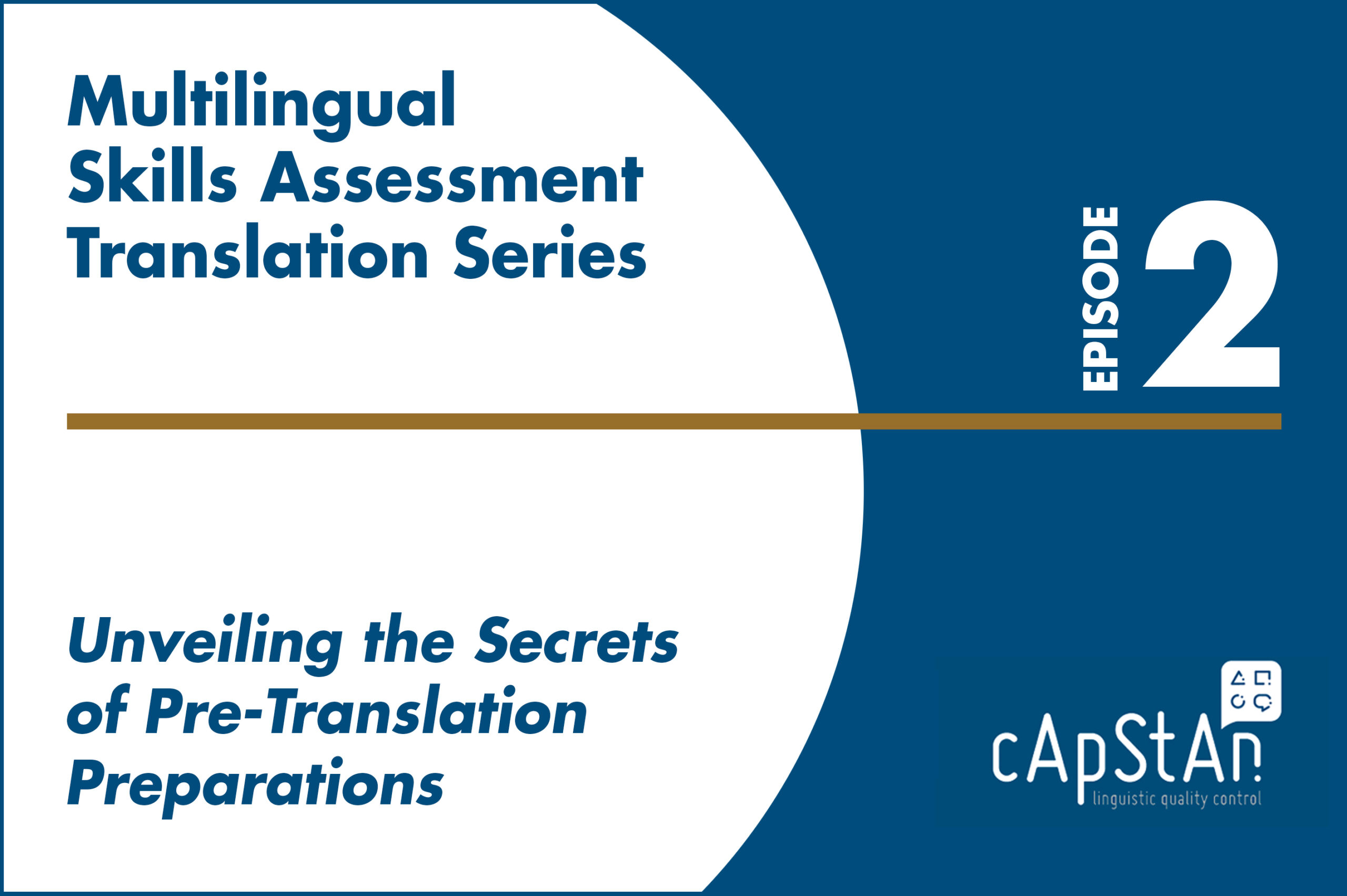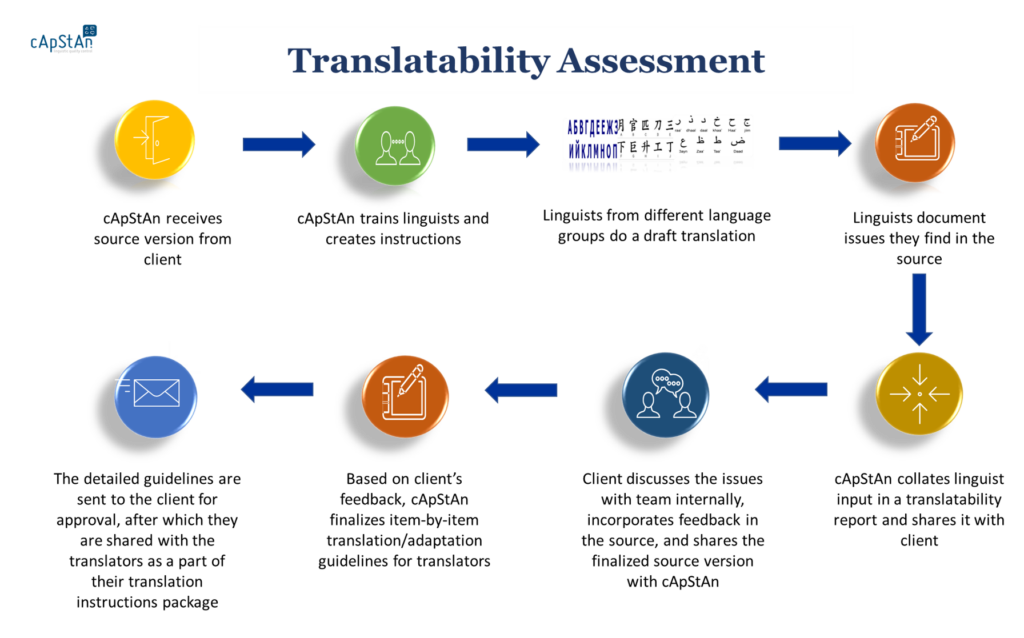
Multilingual Skills Assessment Translation Series, Episode 2: Unveiling the Secrets of Pre-Translation Preparations
Welcome to the second episode of our “Multilingual Skills Assessment Translation Series”. The primary objective of this series is to provide a comprehensive illustration of the complexities inherent in test translation. By doing so, we aim to underscore the immense value derived from establishing a robust linguistic quality assurance design. In this episode, we unveil the strategies behind effective pre-translation preparations employed by experts in ensuring accurate and culturally sensitive translations.
Let’s once again take the example of the Chaos Management Skills Assessment (CMSA), a fictional test designed to evaluate consultants’ competencies in helping companies in damage control situations. This test is administered in 12 languages, building upon the previous cycle of the assessment. In the first episode we looked at how to leverage translations from the previous cycle. Now, we face the task of translating the new items into an additional six languages, expanding the reach of the CMSA.
The linguistic quality assurance process that was implemented includes a Translatability Assessment and the development of item-by-item Translation and Adaptation Notes.
Translatability assessment and report
- The draft source version of the new test items is submitted to three linguists from three different language groups who are asked to produce a draft translation (this translation is not intended to be used for other purposes than identifying potential hurdles).
- The linguists are instructed to simulate being less experienced translators and carefully consider any potential translation or adaptation challenge they encounter.
- The linguists select one of cApStAn’s 14 translatability categories to report the potential issues they identify.
- The feedback provided by the linguists is compiled by a senior linguist at cApStAn.
- This compilation results in an actionable translatability report.
Translation and Adaptation Notes
- For issues identified by the linguists that are likely to arise in multiple target languages or can be generalized, the translatability report may propose item-by-item translation and adaptation notes.
- These notes aim to address the problem or, if necessary, rephrase the question without losing its intended meaning.
- These notes need to be clear and concise, and they form the backbone of a well-designed test translation process.
- It is important to note that all translation and adaptation notes suggested by the translatability assessment team require evaluation by the test developers. Together, they determine which type of adaptations are mandatory, desirable, or ruled out for the final version of the test items.
Below is a diagram of the workflow of translatability assessment of our CMSA:

In the next episode we will look at how our technologist prepared the translation packages in a computer-assisted translation tool, or CAT tool, and provided support to translators.
…………………………………………………………………………………………………………………………
Meanwhile, if you’d like to learn about how we can help you with your test localization projects, contact us, and we’ll get back to you as soon as we can.